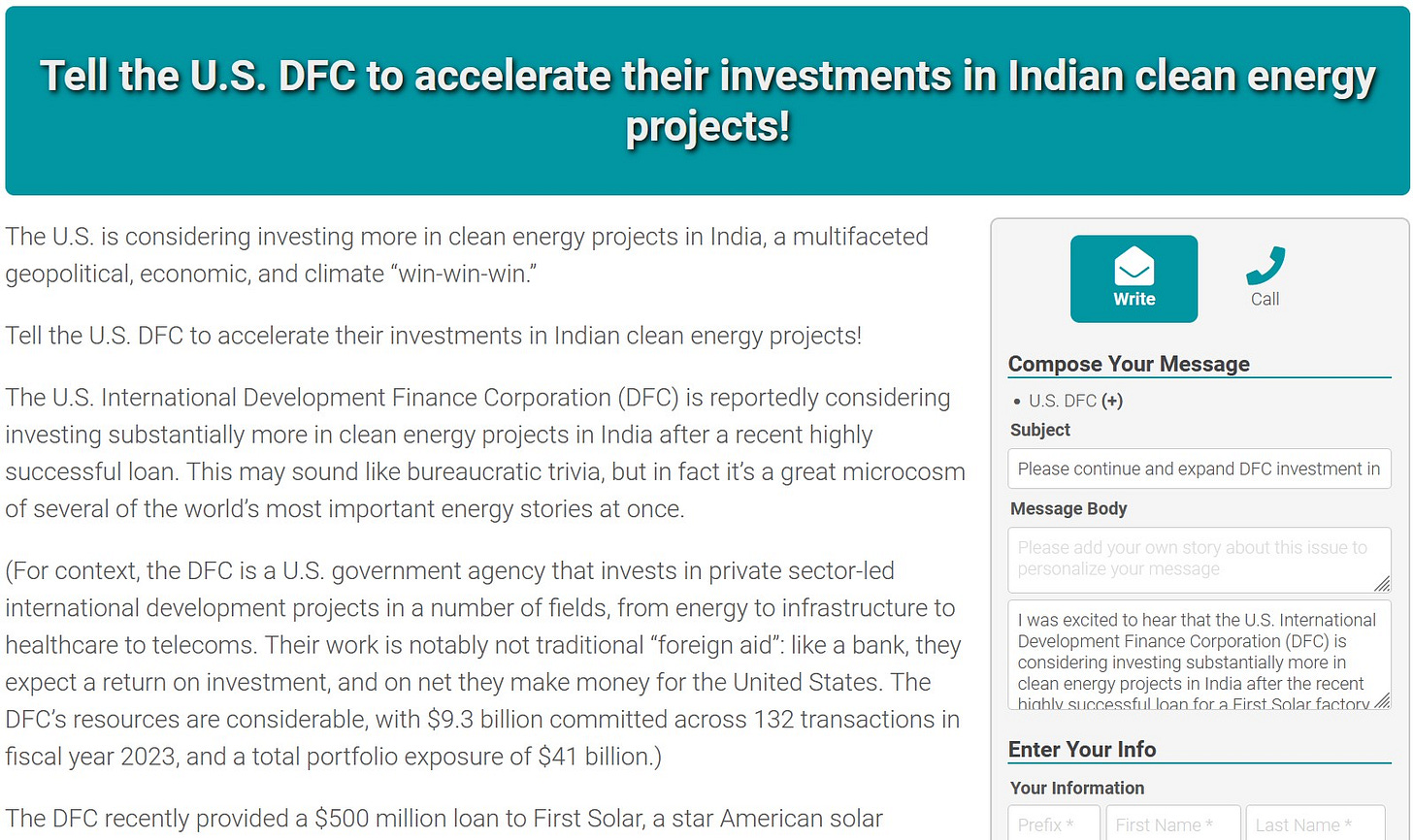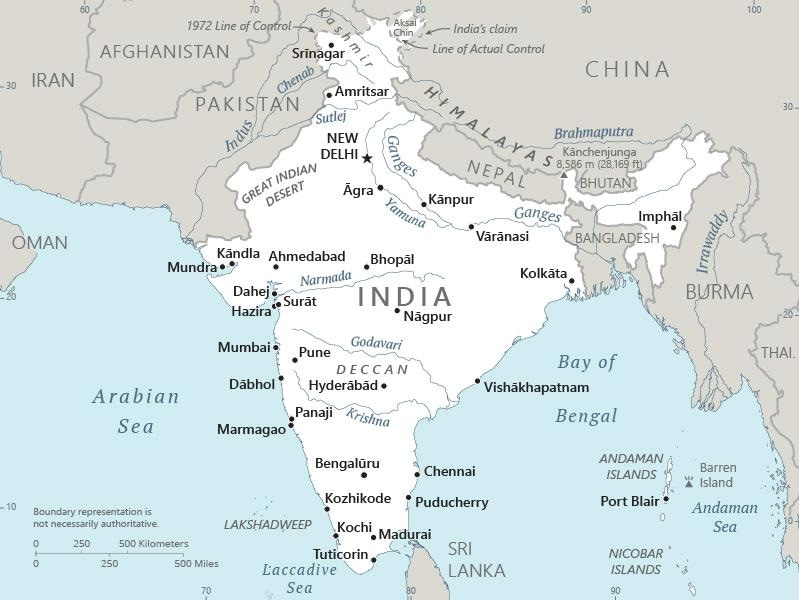Your Daily Dose of Climate Hope: October 2, 2024
U.S. investment for the clean energy projects of India!
The U.S. is considering investing more in clean energy projects in India, a multifaceted geopolitical, economic, and climate “win-win-win.”
Tell the U.S. DFC to accelerate their investments in Indian clean energy projects!
Touch or scan the QR code below to take today’s action in the app and earn trees!
Or take action on the Internet – no app required!
Reasons For Hope
The U.S. International Development Finance Corporation (DFC)1 is reportedly considering investing substantially more in clean energy projects in India after a recent highly successful loan. This may sound like bureaucratic trivia, but in fact it’s a great microcosm of several of the world’s most important energy stories at once.
The DFC recently provided a $500 million loan to First Solar, a star American solar manufacturer, to open India’s first vertically integrated solar panel factory in Tamil Nadu. The DFC head and the U.S. Ambassador to India attended the factory’s ribbon-cutting in January 2024, inaugurating a project that will employ over 1,000 people and produce a whopping 3.3 gigawatts (3,300 MW) of solar capacity per year.
India is the most populous nation-state in human history, with over 1.4 billion people, fast economic growth, rapidly improving public health and welfare, and increasing geopolitical heft. Several consecutive U.S. administrations have endeavored to nurture an emerging alliance with India.
The last few decades have seen incredible leaps in Indians’ quality of life. Extreme poverty has been reduced immensely, with the number of Indians living on (inflation-adjusted) $2.15 a day or less falling from over 420 million people in 1983 to under 140 million in 2019, even while the overall Indian population grew from under 750 million to over 1.3 billion in the same period!
In 1994, about 50% of Indians had access to at least basic electricity (i.e. a lightbulb and basic phone charger, but no appliances), rising to 99% in 2020. But that’s basic electricity, and there’s a lot more electricity needed for the average Indian person to reach a middle-class lifestyle. Over a billion Indians justifiably demand and absolutely deserve living standards comparable to Americans, and the way India gets the electricity to power that surge will be a critical determinant of the future of Earth’s climate.
Solar is already the cheapest electricity in history, making up most of the new capacity being built almost everywhere, and entering an unprecedented new era of exponential growth across the developing world (check out Bill McKibben’s excellent recent article on this!), with rooftop solar already surging in many nations (notably Pakistan) without much government support or even awareness. India is already building multiple gigawatt-scale solar farms, including the largest solar farm in history at the Khavda project, but even more is needed. Financial investment is often the key “last ingredient” to kickstart renewables projects in the few sectors and geographies where they aren’t already growing fast.
Leveraging the financial might of the USA to help accelerate India’s vital clean energy transition is one of the most multifacetedly beneficial “win-win-win-win” actions available in political economy right now. The tech is there; just a little more U.S. investment could unleash amazing clean electricity gains, an early preview of the Clean Energy Marshall Plan policy concept. Let’s make it happen!
Tell the U.S. DFC to accelerate their investments in Indian clean energy projects!
You can also sign up for our How We Win Event Series on EventBrite!
The DFC is a U.S. government agency that invests in private sector-led international development projects in a number of fields, from energy to infrastructure to healthcare to telecoms. Their work is notably not traditional “foreign aid”: like a bank, they expect a return on investment, and on net they make money for the United States. The DFC’s resources are considerable, with $9.3 billion committed across 132 transactions in fiscal year 2023, and a total portfolio exposure of $41 billion.








